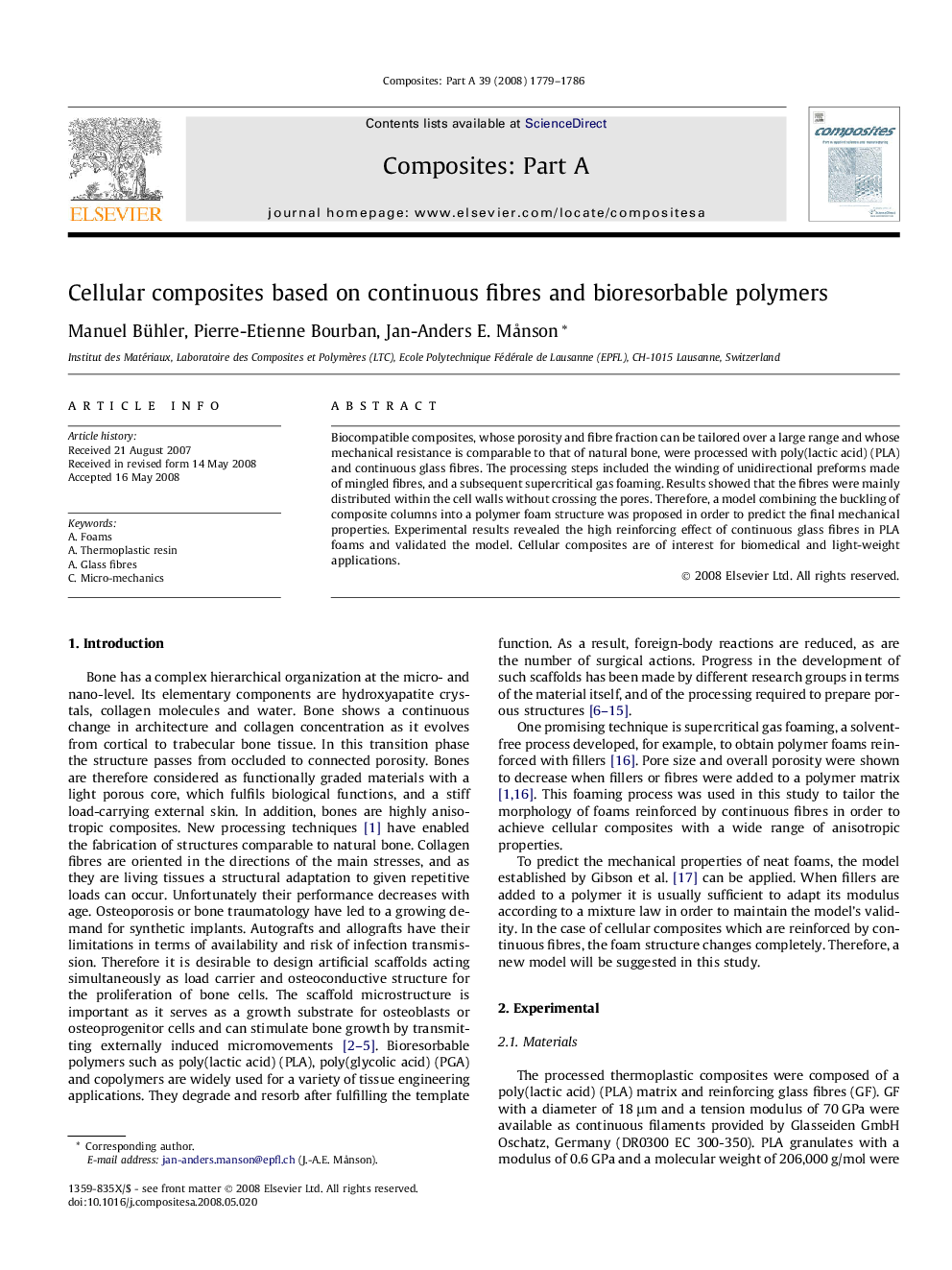| Article ID | Journal | Published Year | Pages | File Type |
|---|---|---|---|---|
| 1467311 | Composites Part A: Applied Science and Manufacturing | 2008 | 8 Pages |
Abstract
Biocompatible composites, whose porosity and fibre fraction can be tailored over a large range and whose mechanical resistance is comparable to that of natural bone, were processed with poly(lactic acid) (PLA) and continuous glass fibres. The processing steps included the winding of unidirectional preforms made of mingled fibres, and a subsequent supercritical gas foaming. Results showed that the fibres were mainly distributed within the cell walls without crossing the pores. Therefore, a model combining the buckling of composite columns into a polymer foam structure was proposed in order to predict the final mechanical properties. Experimental results revealed the high reinforcing effect of continuous glass fibres in PLA foams and validated the model. Cellular composites are of interest for biomedical and light-weight applications.
Related Topics
Physical Sciences and Engineering
Materials Science
Ceramics and Composites
Authors
Manuel Bühler, Pierre-Etienne Bourban, Jan-Anders E. MÃ¥nson,
